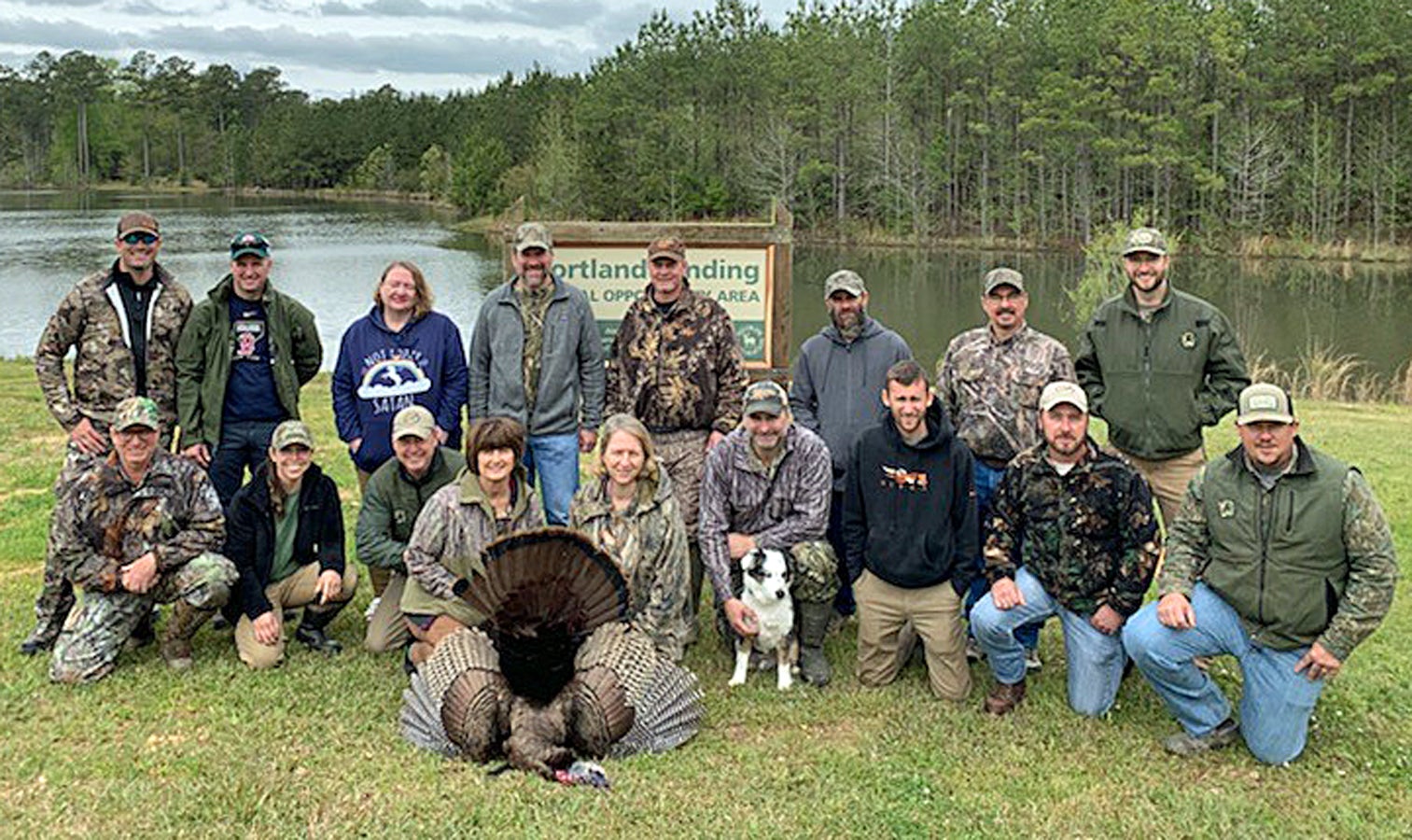By DAVID RAINER, Alabama Department of Conservation and Natural Resources
Steve Barnett, the Alabama Wildlife and Freshwater Fisheries (WFF) Division’s turkey expert for the past two decades, now has more time to spend in the turkey woods.
Barnett, who has been with WFF for 32 years, transitioned to retired status this week as Alabama’s spring turkey season heads toward the peak of breeding season. Barnett actually spent his last weekend serving as a turkey hunting mentor for the Adult Mentored Hunting Program for his last day of official state service.
Barnett recently received the Henry S. Mosby Award from the National Wild Turkey Federation (NWTF) for his work in turkey conservation. Mosby’s research during the mid-1900s set the standard for wild turkey management. Mosby helped found The Wildlife Society and won its Aldo Leopold Medal.
“When I received the award, I said that the individual recognition was really defined by the folks that I work with and the folks I’ve associated with over the years,” Barnett said. “Obviously, that includes my colleagues in Wildlife and Freshwater Fisheries, the NWTF Alabama Chapter and the USGS Cooperative Research Unit at Auburn University, just to name a few.”
Barnett, who will return to WFF on a part-time basis later this year, has both feelings of encouragement and concern about the Alabama turkey population.
“The promising thing is we’ve seen a lot of jakes this year, so it looks like we had a good hatch last year as our brood survey seemed to indicate for 2018,” Barnett said. “The brood survey number was up. It’s still not up to what we want it to be, but our trend is showing just under two poults per hen. That is for all hens, including hens that don’t have any poults. That’s what drives the numbers down.
“The broods, hens with poults, was still good with a little more than three poults per brood. That seems to be the trend. Hens with broods seem to be doing pretty good. What’s driving the potential for population growth down are the hens that have no poults.”
Nest predation is one limiting factor on population growth with the significant downturn in the number of people trapping furbearers like raccoons, foxes and coyotes.
“And we have a fairly new critter in the landscape that is becoming widespread called feral pigs,” Barnett said. “They are known to eat the eggs. If they can catch the hen, they’ll eat the hen. If they can catch the poults, they’ll eat them too. And they destroy the habitat in the process.”
WFF’s publication Full Fans and Sharp Spurs summarizes the brood survey and the Avid Turkey Hunters Survey. The latest report is at the printer and should be available soon.
The Avid Turkey Hunters Survey enlists turkey hunters who spend a significant time in the woods to report several turkey activities – the number of gobblers heard, the number of gobbles heard, the number of hens and gobblers observed and the harvest data.
“That’s something we ask the public to assist us with,” Barnett said. “The larger our sample size is, the better the data will reflect what’s going on across the state.
“We need a lot more hunters participating. We’ve got a little more than 400 folks enrolled. In 2018, about 240 submitted data. If we had about 10 percent of our turkey hunters participate, we would have much better data. Our hunter survey shows we have about 30,000 turkey hunters in Alabama.”
Barnett said concern still exists in the Southeast that the turkey population continues to decrease across the region.
“The biologists in the Southeast Wild Turkey Working Group still think habitat is the key, having quality habitat to meet wild turkey needs,” he said. “Very important is nesting and brood-rearing habitat.”
Brood-rearing habitat is typically grassy areas where sunlight penetrates the forest canopy. The sunlight stimulates the growth of grasses and forbs, which attracts the small insects the poults depend on for forage for several weeks after hatching. Habitat management includes prescribed fire in mixed pine-hardwood stands and managing soft and hard mast-producing trees.
Barnett said the turkey group is also concerned that hunting seasons may start too early in some areas. Alabama changed its opening day from the traditional March 15 to the third Saturday in March. This year, that date fell on March 16.
“The group has concerns that gobblers are being harvested before they have a chance to maximize their breeding potential,” said Barnett, who teamed up in 2009 with his biologist wife, Victoria, to write The Wild Turkey in Alabama, a publication available for download at www.outdooralabama.com.









